Forgotten Founders
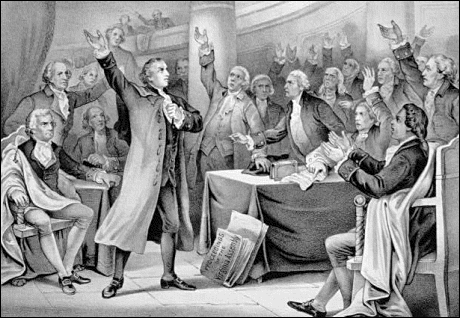
ABOVE: 1876 Currier and Ives lithograph of Patrick Henry
Last night I heard a talk-radio host state that the majority of citizens in the United States cannot name more than a dozen Founding Fathers. I agreed with him and could only come up with 18 names myself. There is some debate over exactly how many of our Nation’s principle founders qualify for the title of “Father,” but I have compiled a list that includes the signers of the Declaration of Independence, signers of the Articles of Confederation and signers of the U.S. Constitution. I then added a list of other political contributors worthy of mention. (Note: many names are repeated)
When examining the list I am amazed at how many names I am not familiar with. It also struck me that I could name the starting line-up of most of my favorite baseball teams (by season), yet I have no clue who half these guys are. It goes to show how we prioritize information and how limiting our teaching to a few “marquee” names can drastically narrow our historical knowledge.
I invite you to join me in exploring the lives of the forgotten founders. I plan on picking 10 ‘foreign’ names to investigate. I will share my findings by writing mini-bios in a future post. As enamored as I am with the Franklins, Adams, and Jeffersons of the group, I feel an obligation, not just as a historian, but as a citizen, to learn something about their overlooked peers.
The Signers of the Declaration of Independence
Massachusetts: John Hancock, Samuel Adams, John Adams, Robert Treat Paine, Elbridge Gerry
New Hampshire: Josiah Bartlett, William Whipple, Matthew Thornton,
Rhode Island: Stephen Hopkins, William Ellery
Connecticut: Roger Sherman, Samuel Huntington, William Williams, Oliver Wolcott
New York: William Floyd, Philip Livingston, Francis Lewis, Lewis Morris
New Jersey: Richard Stockton, John Witherspoon, Francis Hopkinson, John Hart, Abraham Clark
Pennsylvania: Robert Morris, Benjamin Rush, Benjamin Franklin, John Morton, George Clymer, James Smith, George Taylor, James Wilson, George Ross
Delaware: Caesar Rodney, George Read, Thomas M' Kean
Maryland: Samuel Chase, William Paca, Thomas Stone, Charles Carrol
Virginia: George Wythe, Richard Henry Lee, Thomas Jefferson, Benjamin Harrison, Thomas Nelson, Jr., Francis Lightfoot Lee, Carter Braxton
North Carolina: William Hooper, Joseph Hewes, John Penn
South Carolina: Edward Rutledge, Thomas Heyward, Thomas Lynch, Arthur Middleton
Georgia: Button Gwinnett, Lyman Hall, George Walton
The Signers of the Articles of Confederation
New Hampshire: Josiah Bartlett, John Wentworth, Jr.
Massachusetts: John Hancock, Samuel Adams, Elbridge Gerry, Francis Dana, James Lovell, Samuel Holten
Rhode Island: William Ellery, Henry Marchant, John Collins
Connecticut: Roger Sherman, Samuel Huntington, Oliver Wolcott, Titus Hosmer, Andrew Adams
New York: James Duane, Francis Lewis, William Duer, Gouverneur Morris,
New Jersey: John Witherspoon, Nathaniel Scudder
Pennsylvania: Robert Morris, Daniel Roberdeau, Jonathan Bayard Smith, William Clingan, Joseph Reed
Delaware: Thomas McKean, John Dickinson, Nicholas Van Dyke
Maryland: John Hanson, Daniel Carroll
Virginia: Richard Henry Lee, John Banister, Thomas Adams, John Harvie, Francis Lightfoot Lee
North Carolina: John Penn, Cornelius Harnett, John Williams
South Carolina: Henry Laurens, William Henry Drayton, John Mathews, Richard Hutson, Thomas Heyward, Jr.
Georgia: John Walton, Edward Telfair, Edward Langworthy
The Signers of the U. S. Constitution
New Hampshire: John Langdon, Nicholas Gilman
Massachusetts: Rufus King, Nathaniel Gorham
Connecticut: Roger Sherman, William Samuel Johnson
New York: Alexander Hamilton
New Jersey: William Livingston, David Brearley, William Paterson, Jonathan Dayton
Pennsylvania: Benjamin Franklin, Thomas Mifflin, Robert Morris, George Clymer, Thomas FitzSimons, Jared Ingersoll, Gouverneur Morris, James Wilson
Delaware: George Read, Gunning Bedford, Jr., John Dickinson, Richard Bassett, Jacob Broom
Maryland: James McHenry, Daniel Carroll, Dan of St. Thomas Jenifer
Virginia: John Blair, James Madison, Jr., George Washington
North Carolina: William Blount, Richard Dobbs Spaight, Hugh Williamson
South Carolina: John Rutledge, Charles Cotesworth Pinckney, Charles Pinckney, Pierce Butler
Georgia: William Few, Abraham Baldwin
Others of Note
Ethan Allen, Richard Bland, George Clinton, Patrick Henry, John Jay, Henry Knox, Robert Livingston, James Monroe, Thomas Paine, Edmund Randolph, Charles Thomson
Was Richard Kirkland really risking his life for an enemy?
“It’s real easy to think that you would risk your life for a friend, but to risk your life for an enemy is something that is very rare indeed. And that, to me, is the story of Richard Kirkland.”
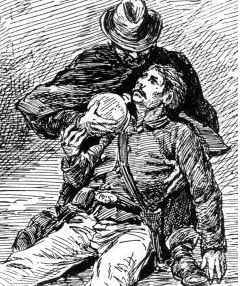 I spoke those words as the conclusion to my segment in the documentary “The Angel of Marye’s Heights.” Since then, I’ve quoted it in speeches, panel discussions and radio interviews.
I spoke those words as the conclusion to my segment in the documentary “The Angel of Marye’s Heights.” Since then, I’ve quoted it in speeches, panel discussions and radio interviews.
This is the essence of Richard Kirkland’s remarkable act and it has left an indelible impression on me. Over the last few months our team has screened this film in theaters, museums and universities. No matter what venue, the message that seems to be resonating with people is “be kind to your enemy.”
This is a difficult, if not impossible virtue to grasp. It does become more palatable however, if we re-examine the use of the term “enemy.” Were these men truly enemies and does Kirkland’s reaction to the suffering of his foes nullify the very meaning of the word when used in the context of the War Between the States? After all, just days before the onset of war, these men were citizens under the same flag, with the same God, and shared history.
It is impossible not to feel sympathy for the suffering that existed between both armies on the field at Fredericksburg. Far too often we have focused on the battle strictly in a political or tactical sense. We simply recognize both armies separately, as bitter rivals hell-bent on each other’s destruction. This is true to a point, but we cannot forget that these adversaries shared a collective existence together as countrymen, and were only enemies under their own self-inflicted circumstances.
In other words, they brought it on themselves by pursuing a military action that literally pitted brother against brother. This is what makes a “civil war” even more tragic than a traditional conflict between nations. It is also what makes the eleven doomed assaults at the stone wall even more absurd, and Richard Kirkland’s act of mercy comprehensible.
In our film storyteller Megan Hicks notes the conflicting nature of Kirkland’s actions as he was both a killer and a kind, compassionate man. During the engagement, Kirkland shot at the very men who he would later administer aide to. This conflicting-conscience goes both ways. In the same light, could the opposing soldiers on the battlefield simultaneously be Kirkland’s enemy and his countryman?
It opens up a whole new dynamic if you accept that there is no black and white in this story. This paradigm was true for the entire conflict from the first shot at Fort Sumter to the surrender at Appomattox. The line between right and wrong, friend and foe were blurred beyond comparison. Perhaps that is why the Civil War is still furiously debated to this very day.
As we prepare to acknowledge the Civil War Sesquicentennial in 2011, the practice of self-inflicted separation remains. It seems that in today’s society the word enemy is thrown around casually as the “argument itself” has become more important than the subject being argued over. Frankly, I can’t recall any other time in my life that our country’s division has been so rampant and spiteful.
We live in a nation of blue and red states and left and right politics. Each night we gather around the television to hear talk show hosts claim that the other’s opposing viewpoints have doomed us all. Americans love to fight amongst ourselves and we are nurturing a culture of enemies. Not much has changed in 150 years.
Perhaps we could learn a lesson from Richard Kirkland and rethink what it truly means to be an “enemy.” Maybe then we can learn to get along.
FEEDBACK: What is your take on this subject? Email your thoughts and I will share them in a future follow-up post.
Posted by ny5/pinstripepress
at 11:25 AM EDT
Updated: Wednesday, 13 October 2010 9:23 AM EDT
Permalink |
Share This Post
Liberty’s Kids for kids
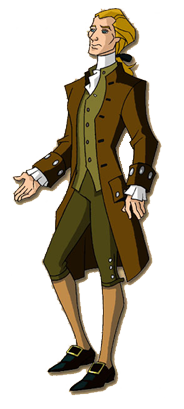 It seems that this month’s hot-button-topic across the blogosphere is the argument over teaching good and bad history to children. I have refrained from participating in any of these debates, but wholeheartedly agree that the topic deserves our attention. Education has been a primary topic of interest at our film screenings, and as a parent of four children, teaching history to youngsters is of particular interest to me. From what I see in our schools, I’m not that impressed with the manner being used to ignite an interest in our past with young people. I’ve always said that our Nation’s history is among our most precious resources, but it means nothing if we can’t relate to it and apply the lessons learned in our daily lives.
It seems that this month’s hot-button-topic across the blogosphere is the argument over teaching good and bad history to children. I have refrained from participating in any of these debates, but wholeheartedly agree that the topic deserves our attention. Education has been a primary topic of interest at our film screenings, and as a parent of four children, teaching history to youngsters is of particular interest to me. From what I see in our schools, I’m not that impressed with the manner being used to ignite an interest in our past with young people. I’ve always said that our Nation’s history is among our most precious resources, but it means nothing if we can’t relate to it and apply the lessons learned in our daily lives.
One challenge that remains in the classroom regardless of time and place is how to get kids excited about history. This obstacle is especially difficult when it comes to young children. How do we begin to capture their attention long enough to introduce them to the subject? My youngest kids have accompanied me on trips to Monticello and it was a chore to get them to recall any of the experience. On a recent Sunday morning before church, I discovered a tremendous cartoon called Liberty’s Kids. After watching a couple episodes I believe that I have found a perfect fit for introducing my youngest children to the founding of our nation. According to their website:
The primary goal of the Liberty’s Kids TV series is to provide young children with a fresh and exciting experience of the extraordinary period of 1773 to 1789 in American history. Through the eyes of two young apprentice reporters named Sarah and James, viewers of Liberty’s Kids will go on adventures in search of the real stories of the American Revolution. Although the setting is Colonial America, Liberty’s Kids’ characters find themselves in the middle of a revolution that confronts issues that still fill the newspapers today - gun control, downsizing government, lower taxes, freedom of the press, and race relations. The entire show is produced using high quality animation and creates an exciting world that today’s kids can jump into and discover the real stories of the incredible time that gave birth to the United States of America. Liberty’s Kids offers caretakers, from parents to teachers, an extraordinary resource through which they can share with young people the inspiring stories, characters, and values at the heart of America’s great experiment in democracy.
I am extremely pleased with this show, both as a historian and as a parent. I highly recommend their website which includes lesson plan material for parents and teachers, as well as full episodes and fun activities. My kids may not remember the master of Monticello, but they know this Thomas Jefferson (pictured here). It is my hope that Liberty’s Kids will be used to provide my children with an effective introduction to history that will hopefully mature as they do.
Artwork copyright 2004, DIC Entertainment.

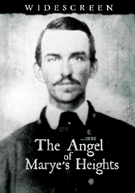
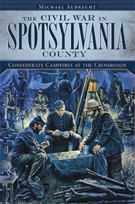
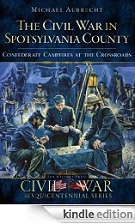

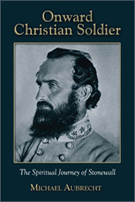

 I spoke those words as the conclusion to my segment in the documentary “The Angel of Marye’s Heights.” Since then, I’ve quoted it in speeches, panel discussions and radio interviews.
I spoke those words as the conclusion to my segment in the documentary “The Angel of Marye’s Heights.” Since then, I’ve quoted it in speeches, panel discussions and radio interviews. 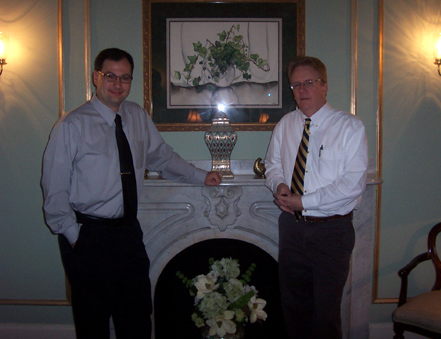
 It seems that this month’s hot-button-topic across the blogosphere is the argument over teaching good and bad history to children. I have refrained from participating in any of these debates, but wholeheartedly agree that the topic deserves our attention. Education has been a primary topic of interest at our film screenings, and as a parent of four children, teaching history to youngsters is of particular interest to me. From what I see in our schools, I’m not that impressed with the manner being used to ignite an interest in our past with young people. I’ve always said that our Nation’s history is among our most precious resources, but it means nothing if we can’t relate to it and apply the lessons learned in our daily lives.
It seems that this month’s hot-button-topic across the blogosphere is the argument over teaching good and bad history to children. I have refrained from participating in any of these debates, but wholeheartedly agree that the topic deserves our attention. Education has been a primary topic of interest at our film screenings, and as a parent of four children, teaching history to youngsters is of particular interest to me. From what I see in our schools, I’m not that impressed with the manner being used to ignite an interest in our past with young people. I’ve always said that our Nation’s history is among our most precious resources, but it means nothing if we can’t relate to it and apply the lessons learned in our daily lives.